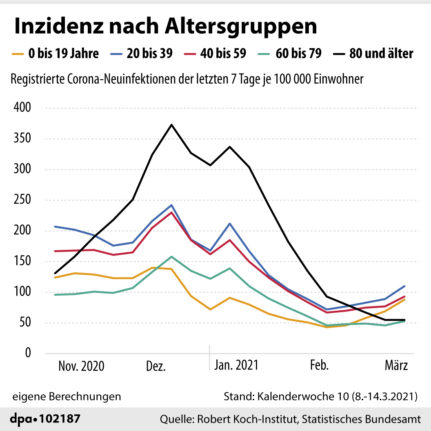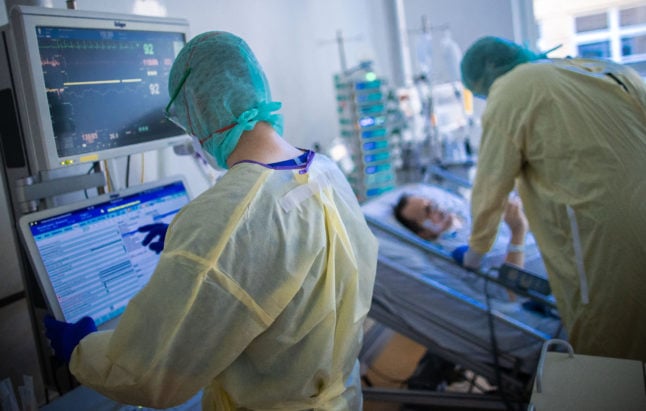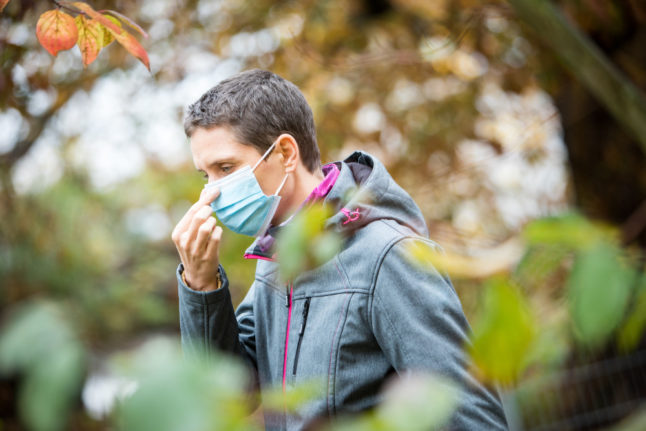With more than 3,000 hospital beds occupied, the load at the moment is as high as at the peak times in the first wave in spring 2020, according to the register of the German Interdisciplinary Association for Intensive and Emergency Medicine (Divi).
“We are now starting the third wave in the intensive care units and at a very high level,” said Divi President Gernot Marx. “We had already warned about this at the end of February and it’s causing us great concern.”
According to Divi data, 3,056 Covid-19 patients were treated in German intensive care units on Sunday.
“We expect a rapid increase in patients over the next few weeks, as the influx of ICU patients always follows the wave of infections by two to three weeks,” he added.
The impact of the current case load won’t likely be known until mid-April, he said.
With incidences in several German cities of around 200 infections in seven days per 100,000 inhabitants, emergency physicians are forecasting around 5,000 Covid-19 patients in intensive care units at the beginning of May.
That would be almost as many as at the peak of the second wave at the beginning of January and could again place a heavy burden on many hospitals.
The RKI reported the so-called 7-day incidence – the number of new infections per 100,000 inhabitants in a week – at 107.3 on Monday morning. This is the highest level since January 26th, and up from 68 two weeks ago.
The good news, according to the Divi forecast: If no new, more dangerous variant comes along and vaccinations progress well, the pandemic could be as good as over for the emergency wards of the hospitals in August.
Patients getting younger
Yet experts do not want to take the situation lightly. “We are already seeing that the patients in the intensive care units are changing: They are getting younger,” said Lars Schaade, Vice President of the Robert Koch Institute.
Virologists have also repeatedly warned that vaccinating the oldest age groups alone will not bring relief. Even in the first wave, only about a quarter of intensive care patients were over 80-years old. Many residents of care homes died in their facilities and did not come to intensive care units at all.

The Robert Koch Institute counts 21.6 million people in Germany in the high-risk group for severe Covid-19 courses.
The Institute considers the risk to be greatly increased in people who are over 65-years old or have certain pre-existing conditions, such as diabetes, chronic kidney disease or the most severe form of obesity.
Health care overload
While 3,000 patients does not automatically mean that Germany’s health care system is overloaded, “the further the number increases, the more other areas must then be restricted in order to still guarantee emergency care,” said Karagiannidis.
Rising numbers also have consequences for the clinic teams. “It’s not professional overload, it’s physical and psychological,” said Divi member Felix Walcher.
“There is great concern that with the chronic overwork of staff, an exodus of staff from nursing will follow.”
The fact that the health system has not collapsed in recent months also has to do with lessons learned from the first wave and progress in preventing severe courses of illness.
In Germany, by the end of 2020, the proportion Covid-19 patients in intensive care units had halved compared to the first months of the pandemic, according to Divi.
For patients receiving invasive ventilation, however, the chances of survival are no better than a year ago: about half of them die.



 Please whitelist us to continue reading.
Please whitelist us to continue reading.
Member comments